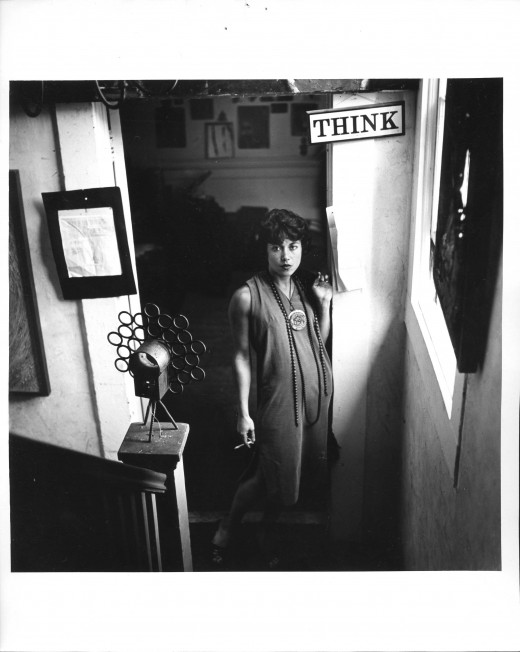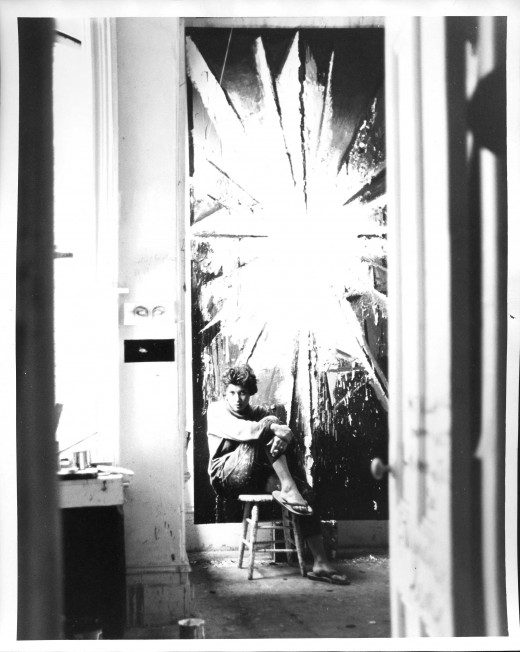
When Jay DeFeo died in 1989, at age sixty, she was at the height of her creative powers. Alternately categorized as an abstract expressionist, a Beat painter, a Funk artist, an eccentric, and a romantic, DeFeo was a star of the small avant-garde art and poetry world of San Francisco during the fifties that included Allen Ginsberg, Bruce Conner, Michael McClure, and Wallace Berman.
DeFeo’s work from the fifties includes large- scale, semi-abstract oil paintings in muted, neutral tones inspired by religious and mythological themes. During the sixties, she worked exclusively on “The Rose,” a massive painting of radiant impasto, built up layer after layer until it measured eleven by eight feet and weighed a full ton. Partially due to health problems sustained while creating The Rose, DeFeo took a four-year hiatus from painting.
She resumed her work in the early seventies, producing hundreds of drawings, paintings, and photocollages that range from organic abstractions to still lifes based on prosaic objects. In the eighties, she combined gestural mark-making with non-organic structure, gradually returning from the use of black, white, and gray to a full-color palette. In all her work, DeFeo struggled with opposites- light and dark, geometry and gesture, representation and abstraction- formal concerns that persisted even in her final poetic evocations of landscape.
DeFeo’s work has been exhibited at the Museum of Modern Art (New York), Pasadena Art Museum, San Francisco Museum of Art and in numerous art galleries including the Menil Collection (Housron), Ferus and Kohn/Turner galleries in Los Angeles.
DeFeo’s most famous painting is the mammoth work simply called “The Rose” which was painted between 1959-1966. It measures 7.5 x 11 feet and weighs 2,300 pounds. Out of view behind a wall at the San Francisco Art Institute for nearly 20 years, “The Rose” was included in the recent Whitney exhibition about Beat generation art. A film called “The White Rose” by Bruce Conner documents the moving of the painting and has contributed to its popularity.
– The American Museum of Beat Art
- Jay DeFeo in her shared Fillmore Street studio, 1960, by Jerry Burchard


